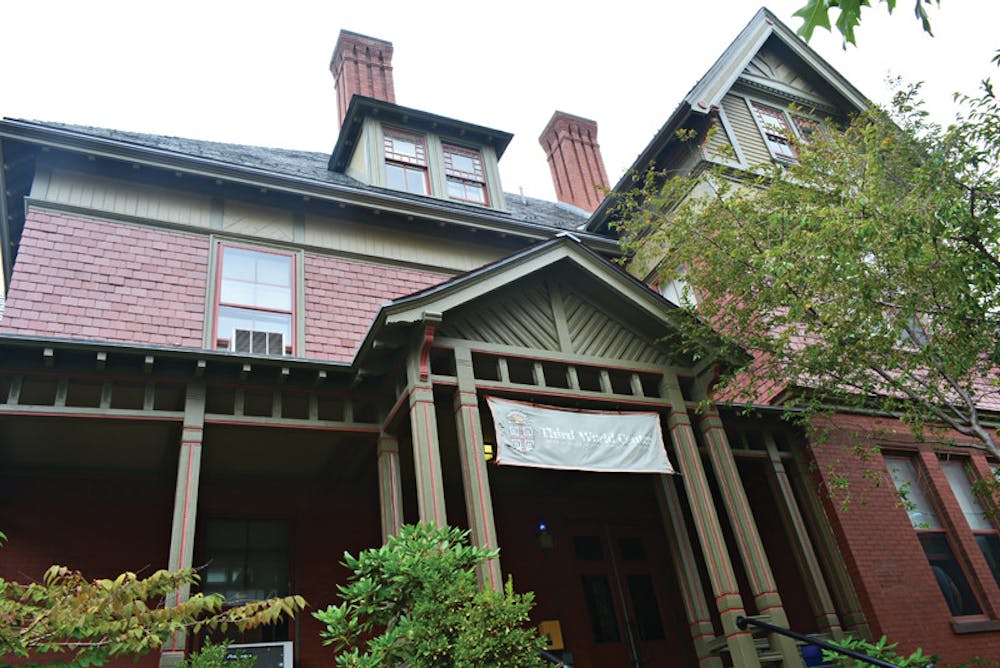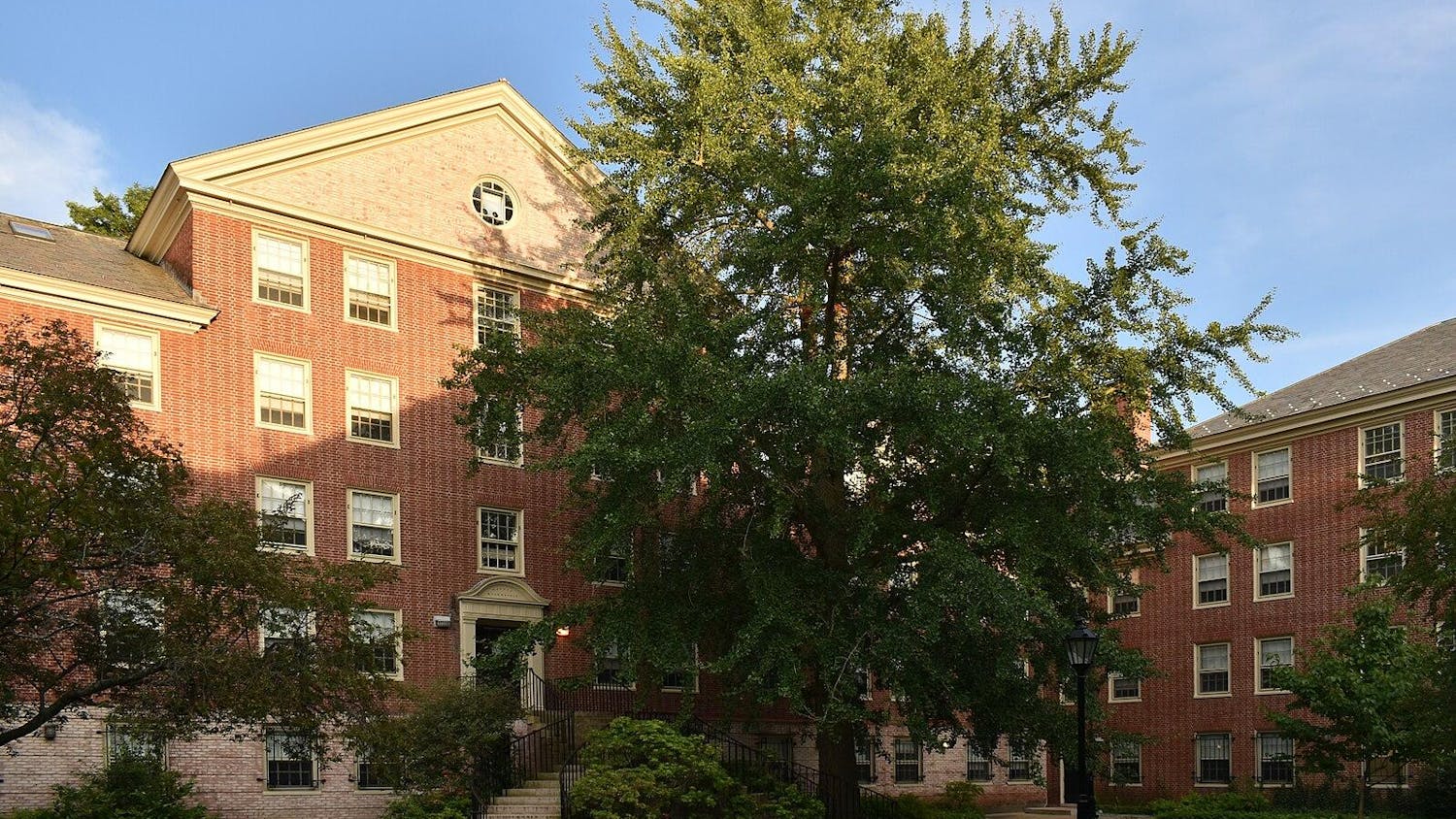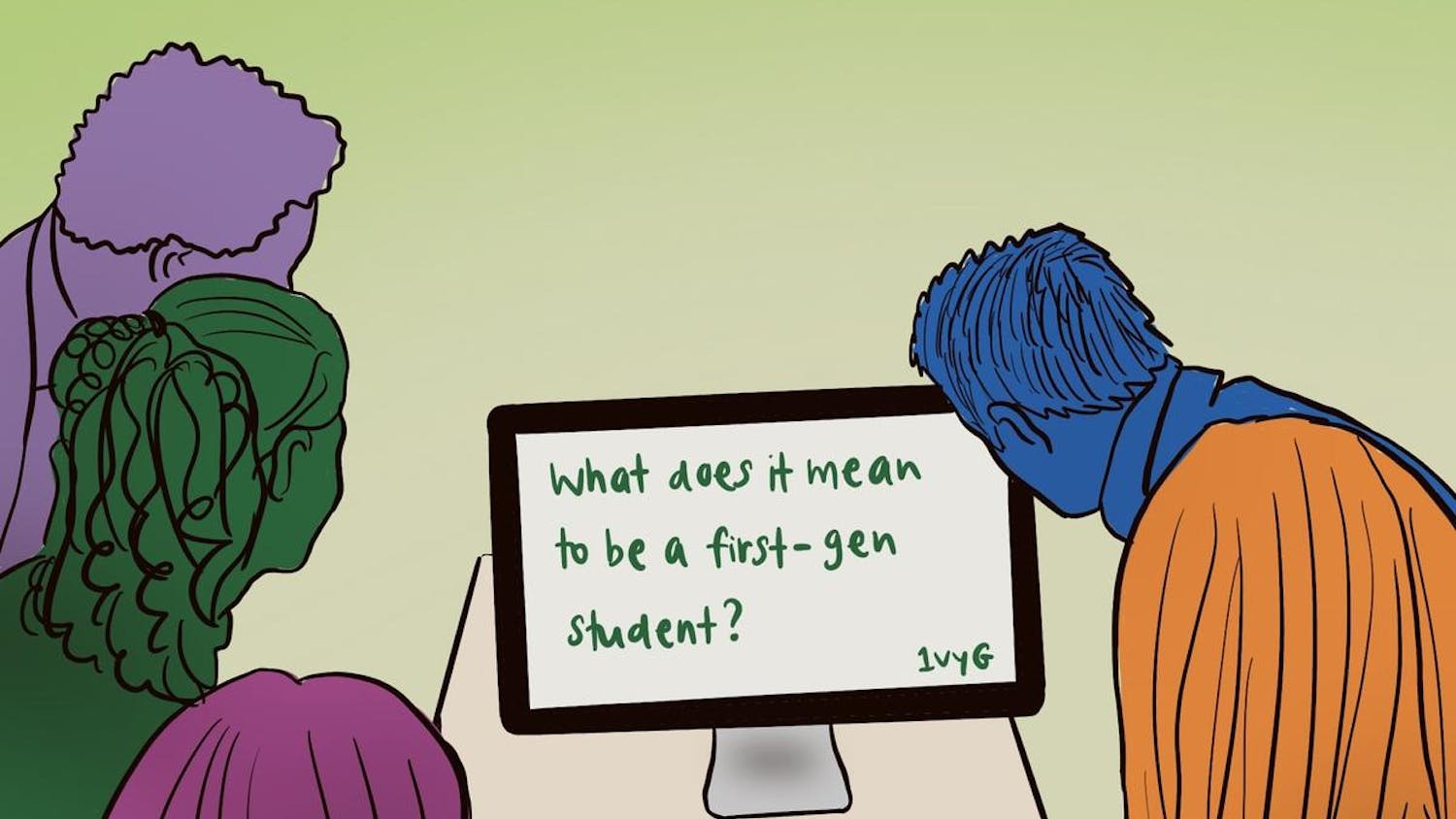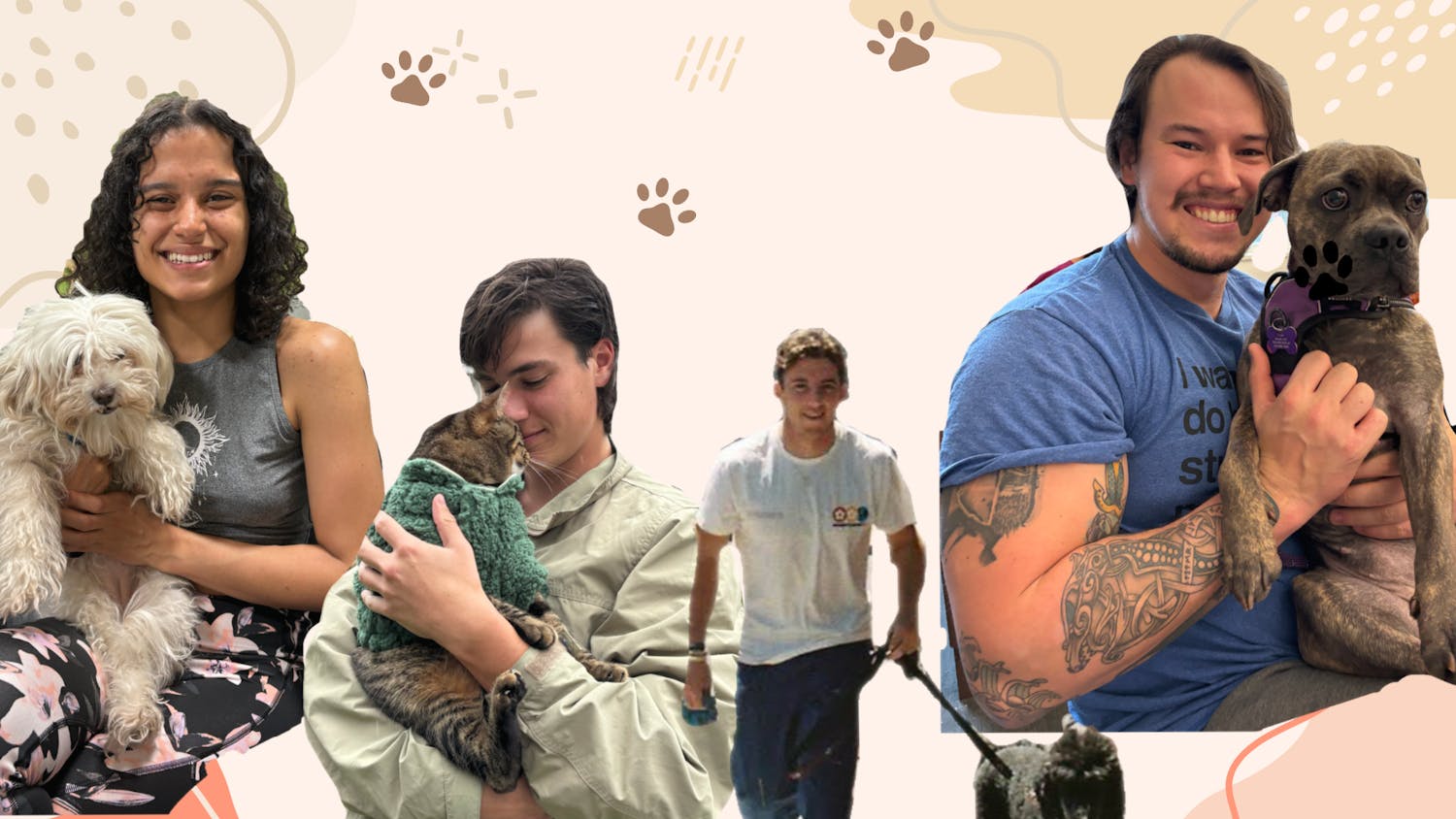This series will explore racism at Brown. This story, the first of three, will look at the role racism plays in relationships among students.
Updated Wednesday, Dec. 3 at 11:59 a.m.
“I feel like malicious racism is hard to find on campus, but there’s a large range of what people would consider ‘racist,’” said David Chung ’16.
Amid heightened discourse over the past year on how race influences dialogue in and out of the classroom, some students have voiced concern about facing discrimination based on their race. This concern comes as surprising for many who see the University as a socially liberal institution.
“I don’t think people would say it to my face if they had any negative perceptions about students of color,” said Adwa Habtu ’16. “Brown is so liberal — it’s not really acceptable.”
“My experience at Brown has (been) composed of a large elimination of racism,” said Allie, a junior whose name has been changed for confidentiality purposes. But some remarks and stereotypes that remain on campus can still be hurtful and degrading, she added.
Facing false assumptions
Manuel Contreras ’16 said he recalls an experience at a football game when he faced direct racial discrimination on campus while fundraising for the Brown-RISD Catholic Community.
“I was with another student and he was also Latino,” said Contreras, a member of The Herald’s editorial page board. “This guy came up to us and … assumed we were workers, because we were two Latino men.”
Students of color may experience preconceived assumptions about how their racial identities should shape their behaviors.
“A lot of it is about perception,” said Emma, a junior whose name has been changed to maintain confidentiality. “Obviously when someone looks at you, they’re going to assume they know things about you.”
Frances Aquino ’16 said she often finds herself in “borderline paranoia,” constantly grappling with the question “Is this person judging?” because of her racial identity.
As students navigate academic and extracurricular choices, such questions come to the forefront. “I would mention to people that I was pre-med, and occasionally … people would ask me, ‘Oh, is it because your parents wanted you to?’” Allie said. “Even though it was never explicitly mentioned that they thought of that because of my Asian heritage, I always got the hunch.”
Maahika Srinivasan ’15 said she often has to navigate conversations dominated by white men in her role as president of the Undergraduate Council of Students. “How much of my identity is delegitimizing my voice in that conversation? That’s something I think about a lot,” she said. “Do I need to position myself in a way where I can make myself more articulate, because I have to make up for the fact that I am a woman of color in that setting?”
Aquino said she worries that her efforts to promote sex in a positive light as a peer educator for the Sexual Health Awareness Group may be overshadowed by preconceptions related to her racial identity. “I don’t know if it’s all in my mind or not, but when people make comments like, ‘Oh you’re in SHAG so you must know some things’ — it’s not like they mention my race at all — but I connect those comments to this insecurity that I have about the stereotype of being this exotic Asian girl.”
But Aquino was interested in joining SHAG in part because she “wanted to defeat the other stereotype of Asians” of being quiet, conservative and demure. “There are so many different facets to my stereotype that I just feel like I don’t win,” she said. “Either way, people are going to categorize me into a stereotype. … Whatever I do, it’s because of my race.”
Left out of the conversation?
The term “student of color” does not refer to a monolithic entity — different students of color come from different socioeconomic backgrounds and experiences, Contreras said.
Any conversation about race “must take class into account,” he said, adding, “The breakdown of people here at Brown has taught me that white norms often mean rich norms. That’s not necessarily true … (but) it’s really hard for me to separate the two from each other.”
Srinivasan feels she often has to choose between her two identities as a woman of color and as an international student.
“I grew up in India. … Race wasn’t a conversation that we had,” she said. “The way that we have conversations about race on this campus really does not resonate with international students” who often come from more privileged socioeconomic backgrounds, do not discuss class and race growing up and subsequently may be less engaged in these conversations on campus.
Asian students may also sometimes feel left out of conversations about these topics. “The stereotypical Asian isn’t the one to complain to everyone about how difficult the world is,” Chung said, adding that Asian students may tend to remain silent and make up for any race-related disadvantage by working even harder.
Kenneth Kim ’17 said he knows many Asian students who are uncomfortable about or unwilling to discuss racial issues and self-segregation.
Racism against Asians does exist in American society, he said, noting that Asians are still known widely as the model minority. But this discrimination is “hidden” and many at Brown do not take note of it.
While Chung has discussed issues of race with other students, he has not participated in protests because he does not view them as productive, he added. “Asians don’t have it as hard because we’re looked at as the model minority — sure, we can be disadvantaged at times, but we’re very privileged to be perceived this way,” he said.
“I’ve encountered this notion, especially among Asian students, that they have not personally experienced racism significant enough to believe that it still exists and matters,” said Andrew, a sophomore whose name has been changed to maintain confidentiality. But “not personally encountering explicit interpersonal racism is not a strong enough justification to discredit or devalue its existence and pervasiveness,” he added.
Many Asian students may have “lived decently comfortable lives, and they plan on working hard to make their future lives more decently comfortable,” Kim said. “They don’t really want to rock the boat.”
Finding a ‘support system’
Similar life experience “probably pushes students of color together,” Habtu said. Growing up in Texas, she was often the “solitary person of color” in her predominantly white friend group. But at Brown, she has forged friendships with several black and Hispanic students.
Still, many students of color are perceived as exclusionary and self-segregating from the rest of the Brown community, several sources told The Herald.
Kim, who is Korean-American, said he mostly spends time with other students of Korean descent because they share a cultural connection. “I don’t think it’s a bad thing,” he said. “College is an unfamiliar environment. … You need something that’s anchoring you.”
“When looking for a support system, if you constantly need to explain why you’re feeling a certain way, that’s exhausting,” said Sabine Williams ’15.5. Students can feel a “certain empowerment in knowing that there is a community that totally understands what you’re going through,” she added.
But Andrew said he is often hyper-conscious of this perception of self-segregation. “If I am with a group of friends and most or all are physically perceived to be Asian, I worry slightly about … being thought of as exclusionary and therefore excluded by others — namely, white people,” he said. But while “white people only hang out with other white people plenty of the time,” he said, they are not subject to similar accusations of self-segregation.
Habtu said just because certain people tend to gravitate to each other based on background and culture does not mean that they cannot break out of those social groups. “I don’t think that I’ve actively tried to seek out people of color — it just kind of happened,” she added.
‘Where are you from?’
At a fraternity party last year, a male student approached Aanchal Saraf ’16 and asked, “Where are you from?” Though she answered Texas, he pressed on, asking, “No, where are your parents from?”
When she told him his questions made her uncomfortable, he turned to her friend and said, “Indian women are the most beautiful women in the world.”
The male student spent the rest of the night shouting “Where is my Indian?” and searching for Saraf during the party. When she tried to go upstairs to her room where she lived as an independent in the frat, he tried to follow her.
But the other part of the night that particularly disconcerted Saraf and her friend was that “no one was saying or doing anything,” about the male student’s behavior, she said.
As an assignment for HIST 1311: “Land Use and Capitalism,” Saraf created an interactive map that delineates safe spaces for students of color based on anonymous testimonials submitted online. The map was published in Bluestockings Magazine Nov. 14.
“Almost everybody mentioned Wriston as an unsafe space. … A large part of that was because of the sexualization” that may occur near the fraternities there, she said.
But Saraf added, “Racism has to do with everything. I wouldn’t say that it’s particular to Greek life,” though party culture in general may lend itself to these types of unwelcome encounters.
Aquino witnessed a similar experience at another “white male-dominated” party that she and her friend attended one night. At the party, her friend, who is black, soon wanted to leave because partygoers were groping her without consent — something Aquino didn’t experience that night.
“We are both women, we were both at the party, but I was comfortable and she wasn’t,” Aquino said, adding that it was clear from that night that many students decide whether to initiate physical contact “according to the color of your skin.”
Habtu also has felt unwanted attention from male students due to her race. “I know my freshman year I would go out and … hear from a lot of different guys, ‘Oh my gosh, I’ve never been with a black girl before,’” she said, adding that even some of her white male friends have voiced similar sentiments about other black female students in her presence.
“It makes you feel like they don’t see you as a person,” she said. “Like you’re just kind of an object or checklist.”
“Sometimes you wonder if a guy is interested just because it’s you or is it some fetish, or is it something he wants to try,” Emma said.
“Some guys would say, ‘I really like you, but I’m not attracted to this ethnicity or this race’ and I think at our age that’s something hard to hear,” she added.
Finding a center
“A lot of people aren’t used to having their subtle or overt racism questioned or checked by people,” Habtu said. “When they come to a campus like Brown where they can’t just say whatever they want and offend people at will, they get really offended.”
Some students seeking a safe space to voice concerns about racism have found a home at the Brown Center for Students of Color, which recently changed its name from the Third World Center. But others have expressed concern that the center may be too insular, and conversations that occur there may not influence broader campus discourse.
Each year, the BCSC sponsors the Third World Transition Program during pre-orientation as well as Minority Peer Counselor workshops throughout the year to promote education and understanding of racial issues.
TWTP was founded because students of color in the 1960s and 1970s wanted institutional support at a predominantly white university, said Stanley Stewart ’16.
“TWTP gave me a really intimate community,” said Contreras, who is now a TWTP coordinator, adding that the program provided a great forum for students of color “to talk about things we’ve always noticed but never had a chance to talk about in a concrete way.”
But Emma, who also participated in TWTP, said she did not find the program effective. “I felt like it wasn’t a great program because it promotes self-segregation,” she said.
Habtu said the program marked “the first time I was exposed to a lot of the concepts” of race and identity, adding that she “wasn’t really sure how I myself could jump into (the discussion) as someone who didn’t know that much about it.”
After pre-orientation ends, students of color can still take part in a host of activities sponsored by the BCSC. But those interviewed expressed mixed opinions on how effective these resources are at promoting inclusivity and awareness.
“It feels like (the BCSC) is not as open to Asians as it is to other students of color,” Kim said. He added that he felt that he could not participate in many of its programs because as an Asian he didn’t feel like he would be considered a true student of color.
Williams has found that the center faciliates a strong community among students of color. “It’s a place that fosters solidarity and empowerment for people of color on this campus, and also for people who identify as allies,” she said.
“I find it funny how people are always criticizing the BCSC for being exclusive and not inviting where there are all sort of events put together and always open,” Williams said.
“They’re not spaces where you’re supposed to feel comfortable,” she added. “A lot of the topics we talk about make us feel uncomfortable because they’re the realities in our society, and we realize that people live it on an everyday basis. … They are uncomfortable for the people living them.”
Others have critiqued the center for not involving the broader campus community in its events.
“I think we’re doing a really good job recently of having campus-wide events that are trying to engage students — white students especially — but the right people are not showing up to those conversations,” Saraf said.
“If you try to bring up the topic of racism, the reason that it makes people uncomfortable is because it’s working under the assumption that it isn’t really a problem here — it becomes something that is quickly delegitimized,” Stewart said.
Srinivasan said, “Sometimes the vocabulary that we use to talk about these issues is very limited and kind of isolationist,” noting that the ways in which racial issues are discussed can sometimes make them seem inaccessible.
Conversations about race and identity need to occur in spaces where as many students as possible can access them, she added.
- With additional reporting by Emily Wooldridge
A previous version of this article incorrectly stated that a male student who harassed Aanchal Saraf ’16 at a fraternity party was a member of the frat and continued to pursue her after that night. In fact, he was not a brother, and it was an isolated incident. The Herald regrets the error.

ADVERTISEMENT




